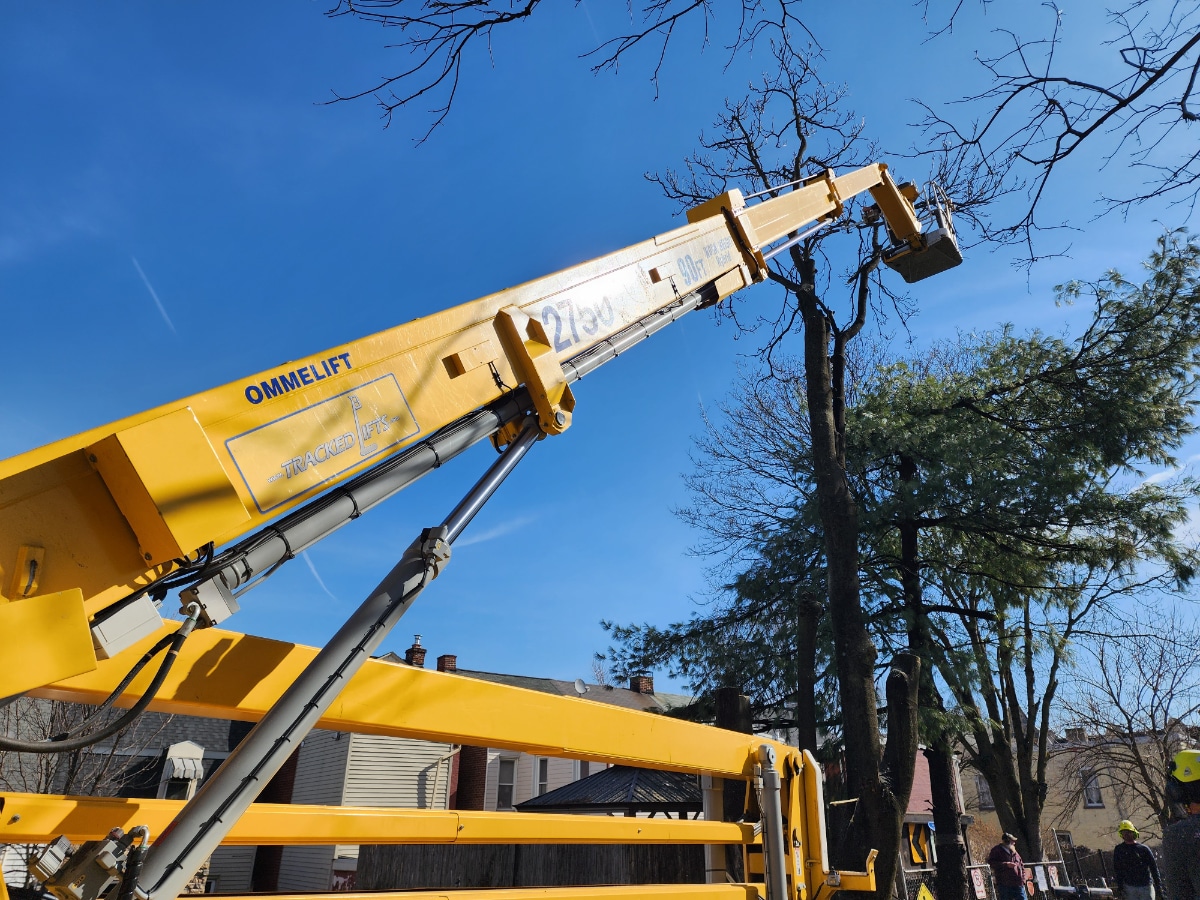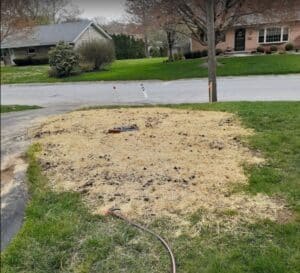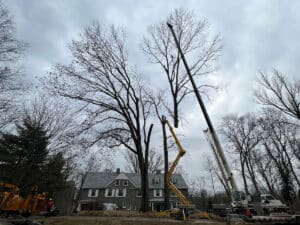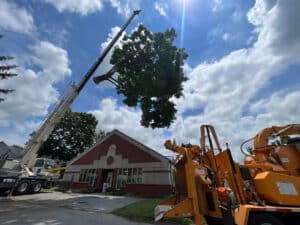Most homeowners aren’t completely clear about what their insurance company will cover and what they are considered responsible for as a homeowner. Tree damage to a home can be expensive, leaving many homeowners wondering if their insurance will cover the costs.
If a tree has damaged your home, will your homeowners insurance cover the loss?
The short answer is yes, homeowners insurance usually covers tree damage, but it depends on the circumstances.
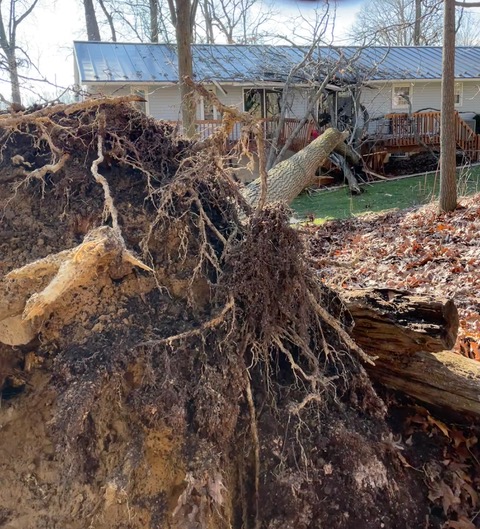
Here’s how it works:
When Homeowners Insurance Covers Tree Damage
In many circumstances your homeowners policy will cover the damage caused to your property by trees or falling limbs.
Falling Trees or Branches Due to Weather
Whether homeowners insurance covers damage from fallen trees typically depends on the cause. If a tree falls due to wind, lightning, or another covered peril, your policy will usually pay for:
- Repairs to the structure
- Damage to belongings inside
- Removal of the fallen tree (usually up to a certain limit)
Neighbor’s Tree Falls on Your House
Your insurance will generally cover the damage, even if the tree was not on your property.
If the tree was dead, diseased, or improperly maintained, your insurer may try to recover costs from your neighbor’s policy.
Damage to Other Structures
If a tree falls on a garage, fence, or shed,they are usually covered under the “other structures” part of your insurance policy. As long as you have coverage for the structure in question, this damage should be covered.
Tree Removal Coverage
Most policies help cover tree removal if it damages your home or blocks a driveway, but there are limits (often around $500-$1,000 per tree).
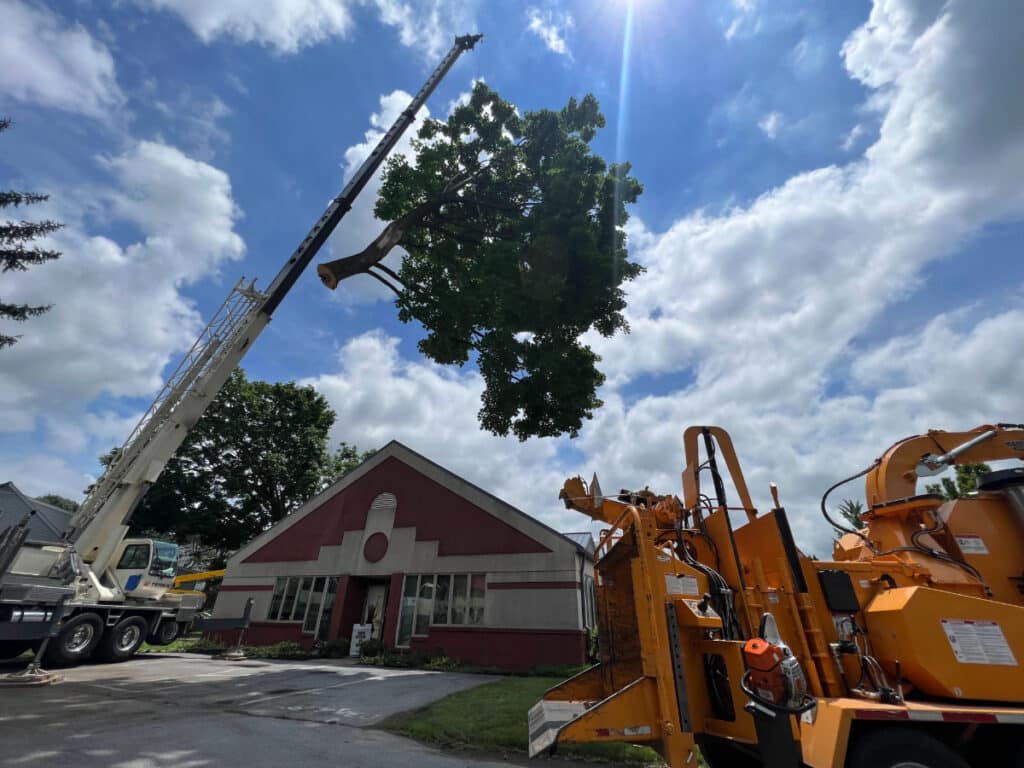
When Home Insurance Does NOT Cover Tree Damage
Neglect or Disease
If a tree was dead, rotting, or poorly maintained before it fell, insurance may deny the claim because it’s considered preventable and they will not repair damage. The general principal is that if you could have prevented the damage by proper maintenance or removal of a tree, then your claim could be denied by the insurance company.
Tree Falls Without Causing Damage
If a tree just falls in your yard but doesn’t hit anything, you’re responsible for cleanup and debrisremoval unless your policy includes special coverage.
Since no damage occurred to your home, most policies will not cover cleanup costs unless you have additional coverage.
Earthquakes or Floods
If an earthquake or flood causes the tree to fall, standard home insurance won’t cover itunless you have separate earthquake or flood insurance. The cost of adding earthquake or flood coverage can be significant.
How to File an Insurance Claim
Filing a homeowners insurance claim after tree damage can feel a little overwhelming, but taking it step by step makes for a smooth process. Here’s what to do:
Step 1: Contact Your Insurance Company
Call your insurance company as soon as possible to report the damage to your home. Ask them for the following.
- The claim process and timelines.
- The documentation you’re required to submit.
- Whether they will send an adjuster or need tree removal contractor estimates/cost for repairs.
You should also ask them what type of a payout to expect and how long it will likely take. Payouts from significant damage can take up to several months and depend on your policy type.
Step 2: Document the Damaged Caused by the Tree
The insurance company will want to see clear documentation of the damage to your insured structure. This gives them the information they need to more quickly process your claim so that you can receive a timely payout.
- Take multiple photos of the damage from different angles
- Photograph the fallen tree, including it’s original location.
- Don’t forget to capture interior damage if it has occurred.
- Write a short description of what happened and the damage to your property.
- Support your claim with formal estimates from a tree service company and a contractor.
Step 3: Follow Up with Your Insurance Company
It’s a good idea to follow up periodically to make sure the process is continuing to move forward. Ask if there is anything you can do to help the process keep moving. Continue to follow up until you’ve received your payout.
Preventing Damage & Insurance Issues
Preventing damage to your home or problems with insurance coverage is always preferable to having to file a claim or, worse, fight for the claim to be paid.
Tree Maintenance
Assess the health of the trees on your property annually and after major storms to see if there are any trees that need removed, trees trimmed or otherwise addressed. Look for trees that are leaning, have dead branches or root damage. If you’re unsure about the safety of any trees on your property, reach out to a local professional tree company to get their opinion. The cost of preventing damage to your home or your neighbor’s property is often well worth it.
Review Your Insurance Policy
Consider an annual review of your insurance policy so that you’re aware of what’s covered and what’s not. If there are areas which are unclear, reach out to your agent to discuss and get more clarity. If there are gaps in your coverage that are concerning to you, they can also help you assess the costs and benefits of adding more coverage.
Have Questions About Your Trees?
If you’ve got concerns about leaning or threatening trees on your property, or you simply want a free tremo removal quote and consultation, give us a call today. As a Lancaster tree company, we’ve been helping Central Pennsylvania remove trees safely and cost-effectively since 1996. We’ve got the cranes and trucks to tackle any job. Call now for a free quote.

